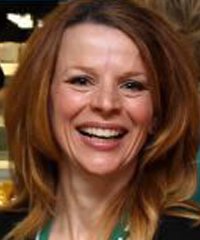Why Is Obesity Still Rising Among Adults?
Americans are still getting fatter. Since 1999, adult obesity has increased from around 30% to almost 38% in 2014. Here are some eye-opening statistics about the health of American adults.
- About half of all adults get the recommended 150 minutes of physical activity per week.
- Only 3% of Americans meet the definition of a healthy lifestyle:
- Have a healthy body fat percentage (less than 20% for men and less than 30% for women)
- Meet exercise recommendations
- Are non-smokers
- Score in the top 40% on the Harvard Healthy Eating Index
Obesity is not just an issue for your health. Obesity as a nationwide issue impacts our ability to defend our nation and respond to crises. Did you know that many young adults are rejected for military service because they are not fit enough to serve? Active duty service men and women, as well as those who serve our communities as firefighters and police, are overweight or obese, which not only costs our communities more in health insurance, but puts our public safety in jeopardy.

Image courtesy of Pixabay
So, why are we having difficulty nipping obesity in the bud? The answers are complicated, but our fast-paced, technology-focused lifestyles and high-calorie, nutrient-poor convenience foods have made it hard to be healthy. Here are some of the most common barriers to weight management:
We eat out too much. Most Americans eat about two-thirds of their meals outside of the home. When we eat out, we generally consume far more calories than we should, consuming far more fat, sugar and refined carbohydrates.
We don’t eat enough veggies. Most Americans eat fewer than 2 servings of fruits and veggies per day. The recommendation for veggie intake is 5, but ideally, we should be consuming up to 9 servings per day.
We eat too much processed food. Whole foods like fruits, vegetables, whole grains and protein are much better for us than processed food. A can of soup can have up to 800 milligrams of sodium in it. That bagged meal you picked up from the freezer section has about 270 calories per serving, 0 grams of fiber, 6 grams of saturated fat, and may have trans fat. Trans fats can increase LDL “bad” cholesterol and lowers the “good” HDL cholesterol, whose function is to mop up excess fat lingering in the blood.
We consume too much sugar. Sales of sugar sweetened beverages is on the decline, so where are we getting all that sugar? Cereal, bread and other prepared foods have a lot of sugar in them. In fact, it’s difficult to avoid sugar in our diets when we eat processed foods. If you are eating low fat foods such as salad dressing, sugar is being added to replace the flavor lost by removing the fat.
We eat junk food disguised as health food. If you are eating the packaged low carb, high protein bars, read the label. If you can’t pronounce what’s on the ingredient list, you probably should not eat it.

















